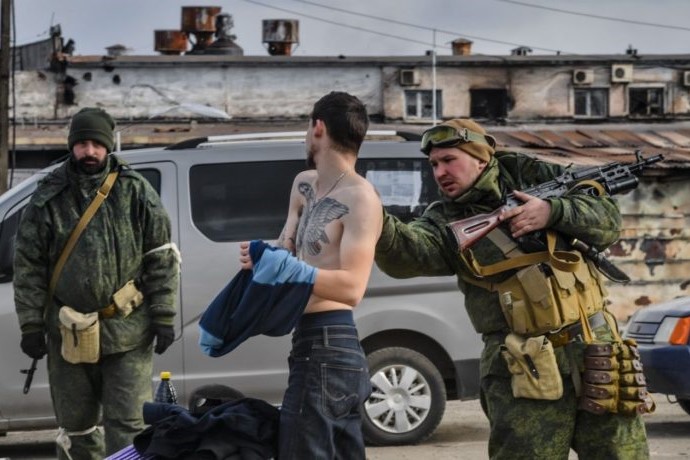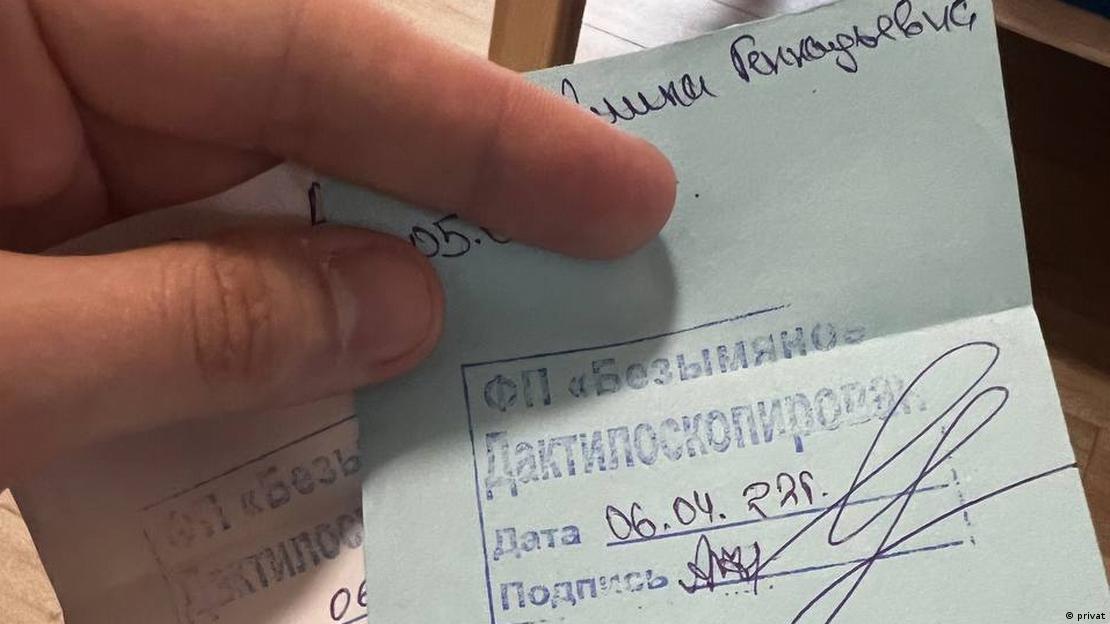‘Filtration’ of Ukrainian citizens by the occupying forces. A form of violence on many levels

The word ‘filtration’ became widely known during Russia’s invasion of Ukraine last year. The actions it describes came into being much earlier. Specialised filtration camps operated in the Soviet Union from 1942 to 1949 for Prisoners of War and those repatriated from abroad during and after the Great Patriotic War (1941-1945). During the fighting in Chechnya in 1994-1996 and again in 1999-2003 Russian soldiers and security services processed no less than two hundred thousand Chechens, i.e., every fifth inhabitant of that small North Caucasian republic.
Russia is not eager to shake off its totalitarian past and its occupying forces brought ‘filtration’ with them to Ukraine. It is a significant and widespread violation of human rights. We must study it in detail so as to do everything in our power to put an end to such an abuse.
Filtration in Ukraine
Russia’s soldiers conduct forced screening and registration of Ukrainian citizens everywhere — on the street, at home, at checkpoints and in specialised filtration units. By studying this forced screening, we can uncover its purpose: to expose and detain active individuals whom the occupation regime regards as a threat. This screening takes various forms and has occurred in a variety of situations since 2014: in the Occupied Territories of Crimea and the Donbas, on entry to Russia and on leaving Russia to travel to European countries.
In this overview, we describe the various forms of ‘filtration’. Each creates conditions for the violation of human rights and we should be aware of all those conditions. We shall not here consider the places of detention to which the people are transferred who fail the screening test. That is a subject for separate investigation.
Russia’s leaders claim that they are not ‘screening’ or ‘filtering’ the population. In accordance with international practice, they are merely registering Ukrainian citizens as they enter Russia. This is not true. The testimony of those processed in this way shows that Russians are trying to ‘filter’ the entire population of the Ukrainian territory it has temporarily occupied.
“Primary” and “total” filtration
So-called primary filtration takes place on the streets of Ukraine’s occupied villages, towns and cities and at a variety of checkpoints. Russia’s media outlets use the term ‘primary filtration’ to describe the checking of personal documents on the street or at checkpoints and the examination of vehicles and, sometimes, of people’s bodies in search of suspect tattoos.
‘Filtration’ is obligatory for those living in the temporarily occupied territories of Ukraine. In spring 2022, there was a rumour that people would not be allowed to leave their village, town or city unless they had passed through filtration. Apart from checks on the street and at checkpoints, specialised filtration points for ‘total filtration’ were then set up. In spring and summer 2022, tents and other temporary shelters were used as filtration points. Inhabitants of the occupied territories were obliged to travel to these points in their own vehicles or were transported there in buses. Long queues formed at those filtration points in spring 2022. People either lived in their vehicles for several days or visited the filtration points on several occasions in the hope of passing through ‘filtration’ before curfew. Filtration points were then working around the clock.
What happens during filtration
During filtration in Ukraine people are fingerprinted and registered in accordance with their Ukrainian ID documents. They are asked about their attitude to the Ukrainian regime, to Russia and to the local occupation authorities. “Do you want to go to Ukraine?” is one of the most commonly-asked questions.
Then the individual’s mobile phone will be checked for texts on social networks, contact lists, and photographs. Often a back-up copy is recovered in order to examine deleted information. The phone is checked to assess an individual’s attitude to the Ukrainian authorities and to uncover his (or her) links with Ukrainian service men and women. If the information on social networks reveals the person to be a patriot who supports Ukraine’s armed forces that is sufficient grounds for the occupying regime to detain the individual.
Staff of mobile and permanent checkpoints keep prints of tattoos, which are one justification for arrest. Among suspect tattoos are runes, crosses and Ukrainian tridents. Emblems of computer games and other unfamiliar symbols are considered suspicious. Marks of chafing on the skin, from the bearing of arms or wearing of flak jackets, are sought; as are marks on the index finger of the right hand and bruises on the right shoulder from the impact of firing a rifle.
Filtration may culminate in a person’s arrest. Those at greatest risk are: veterans of the Anti-Terrorist Operation of 2014-2018 in east Ukraine; former soldiers: retired policemen, border guards and officers of other security services; as well as members of patriotic organisations. People of that background are targeted during ‘filtration’. “At certain checkpoints people with lists entered the bus”, one witness said, “and checked names against the list.”
Those who do not pass the filtration process, disappear.
Successful filtration
The individual who satisfies those conducting the filtration process receives a small square piece of paper. This indicates his or her name, patronymic and surname; date of birth; a stamp bearing the name of the filtration point, e.g., “FP Bezymennoe”; a little lower the entry “fingerprinted”; and at the bottom of the page the date and first name of the person who conducted the filtration (his surname is not provided).
After undergoing filtration, people must carry this ‘certificate’ with their ID documents. This certificate, say those who run the filtration points, a pass for all the occupied territories and guarantees access to Russia itself. In practise it is suggested that people should present these certificates at every checkpoint. However, one witness noted, “Before September, the fuss about filtration declined drastically, and such certificates ceased to be relevant.”

Another form of filtration
Another form of filtration takes place when all the inhabitants of a town are subject to a total verification process. Soldiers enter every house or apartment and check people’s ID documents and mobile phones; they examine people for tattoos and search the premises. Russian soldiers also call this ‘filtration’. Violence is widespread during such activities, people are beaten and tortured. Cases of murder and rape have been recorded. Such types of filtration may be conducted many times, moreover, in the same settlement.
Certain residents of the Kinburn Spit (pop. 843; 2016), a peninsula and resort area in the Mykolaiv Region occupied by the Russians, were taken “to the pit” following such a filtration process. There they were thrown into a pit dug in the earth and were beaten and tortured for up to a month.
Psychological consequences
The filtration procedure is traumatic, especially for children. We know of cases where people needed long treatment from a psychotherapist after undergoing filtration.
To reveal their tattoos both men and women are forced to undress in special premises. Only adolescents and women over 40-45 years of age are excluded from this procedure. During the filtration process many people are held in humiliating conditions, unsuitable for their life and health: they are detained in unheated premises without windows and unsuitable for sleep, without food, water or access to medical treatment.
*
FSB officers conduct a particular form of filtration when carrying out checks on Ukrainian citizens leaving Russia for neighbouring countries. At times people are interrogated for several hours. Some are arrested as a result of this final stage of ‘filtration’.
The author is an expert with the Centre for Civil Liberties.